Case Courtesy Dr. Daniel Mantilla, FOSCAL Clinic, Bucaramanga, Colombia
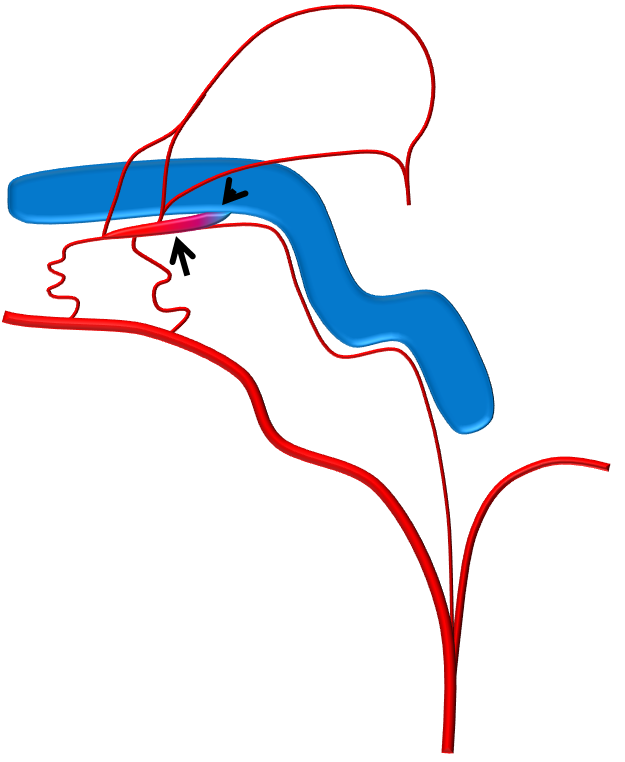
Another example of common collector channel in wall of sigmoid sinus, upon which multiple arterial fistula feeders converge. Superselective embolization of this channel allows for fistula cure and sinus preservation. In this case, antegrade sinus flow towards the jugular bulb is already occluded, however it is still important to preserve as much sinus as possible as its connection to the torcular remains open.
Patient presents with pulsatile tinnitus and what else?
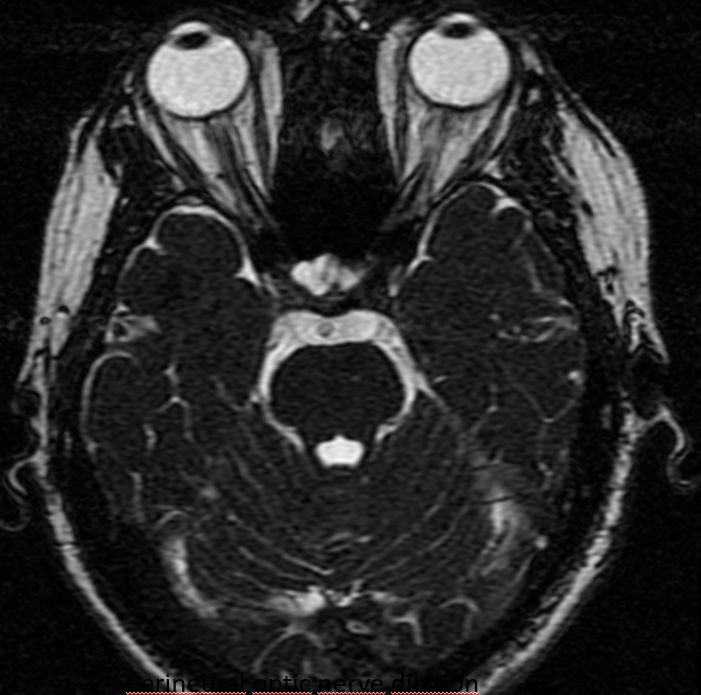
more mri
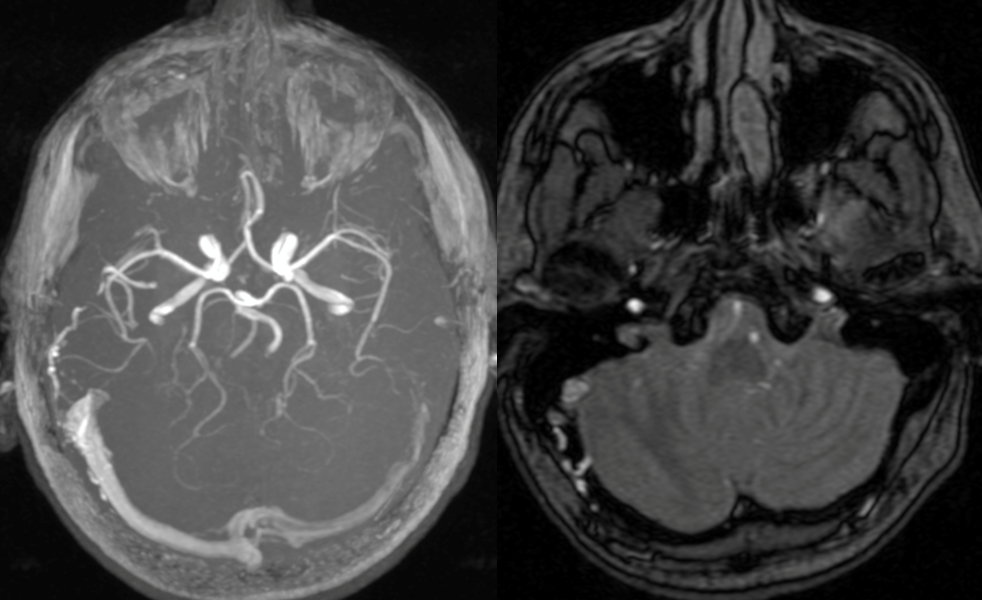
Right ECA. Contributions from MMA and Occipital Artery to the fistula. The myriad feeders converge on a common channel (white arrow) in the wall of the sinus. Usually, this common feeder is in the inferior aspect of the sinus, as it is here. The connection between this channel and sinus proper is marked by white arrowhead. Proximally, the sigmoid sinus is occluded (black arrow) with drainage retrogradely towards the torcular, as is also seen in the MRA image above.
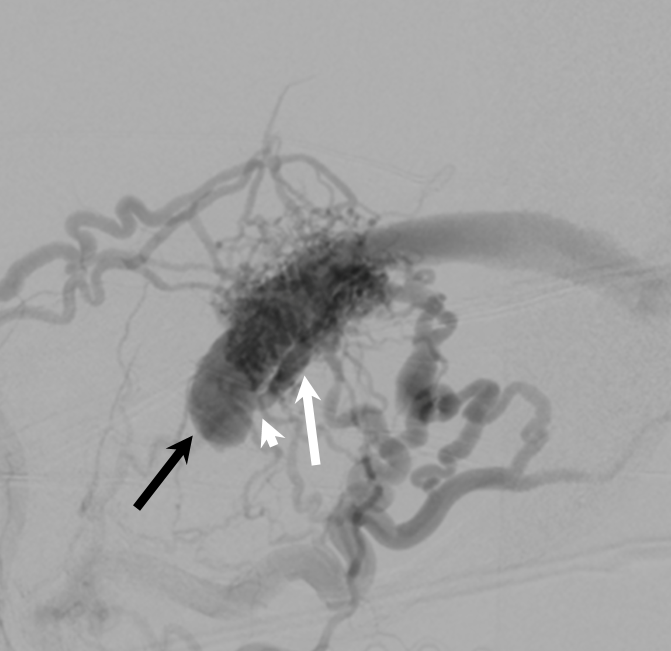
Separate distal ECA and Occipital injections
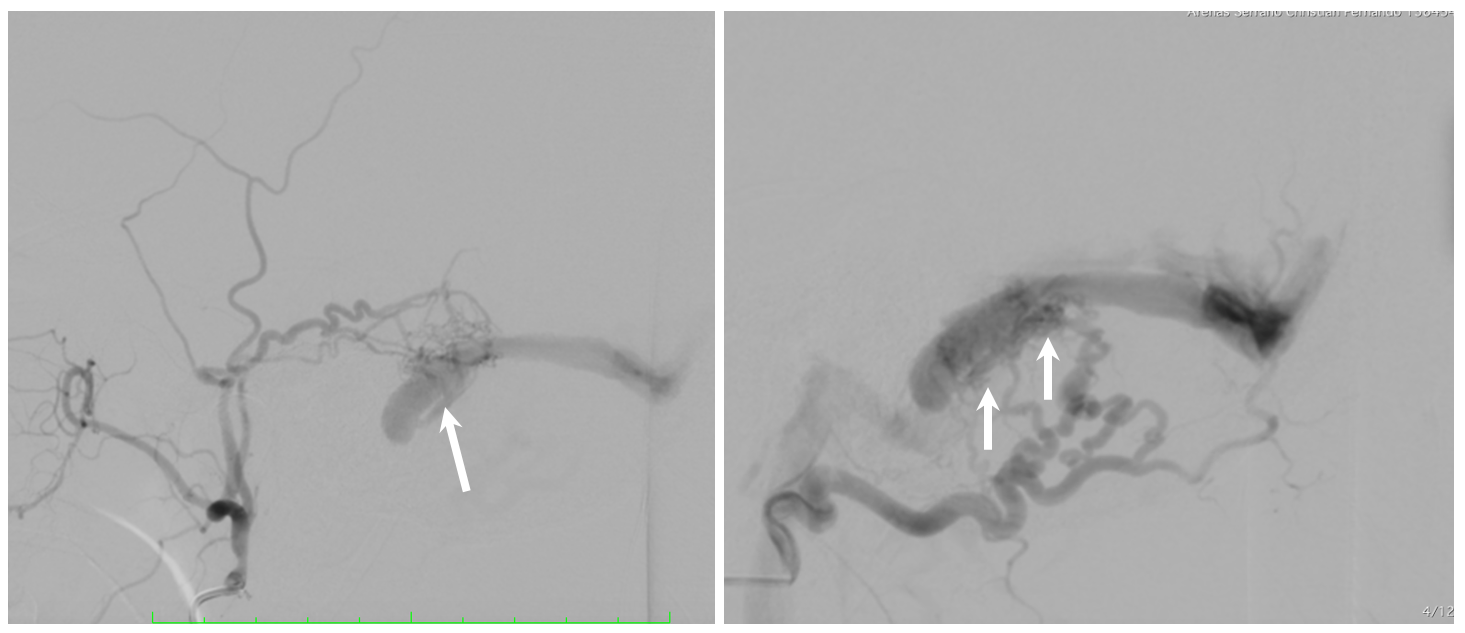
Superselective catheterization of the common channel (white arrow), with contrast running off into the sinus proper
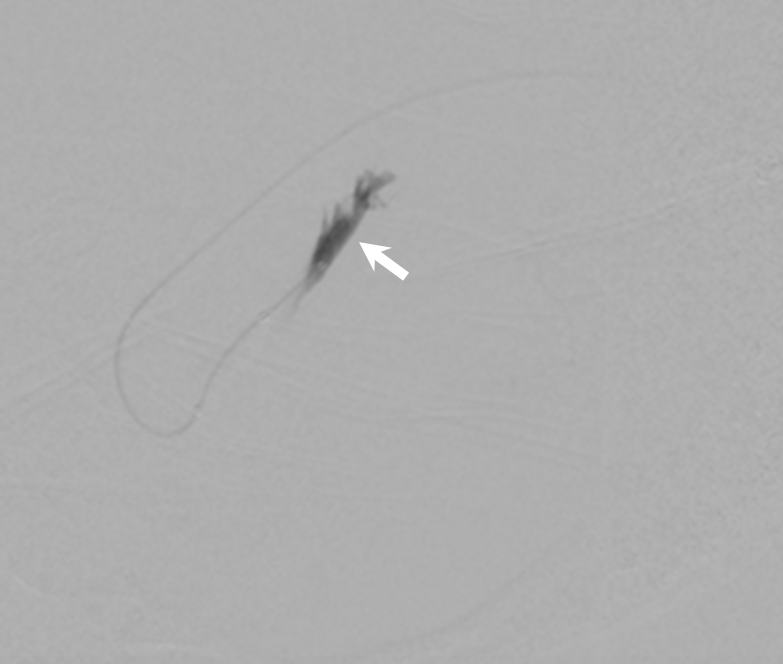
Native views. The microcatheter is a Scepter, which allows for inflation of balloon to arrest outflow and have all the control you need for subsequent liquid embolic injection
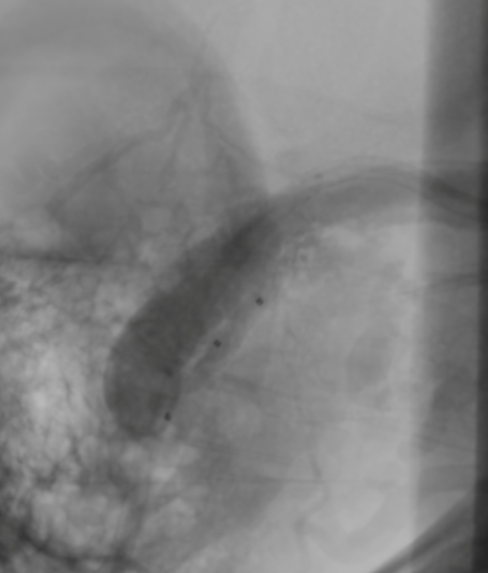
Onyx cast in the common channel (white arrow) and its various arterial tributaries. Connection to sinus proper is again shown by white arrowhead. This transvenous onyx embolization is the perfect approach in every respect — it minimizes hazards of trans arterial liquid embolic injection and minimizes embolization of nontarget vessels –arteries far away from fistula that are often sacrificed with transarterial approaches
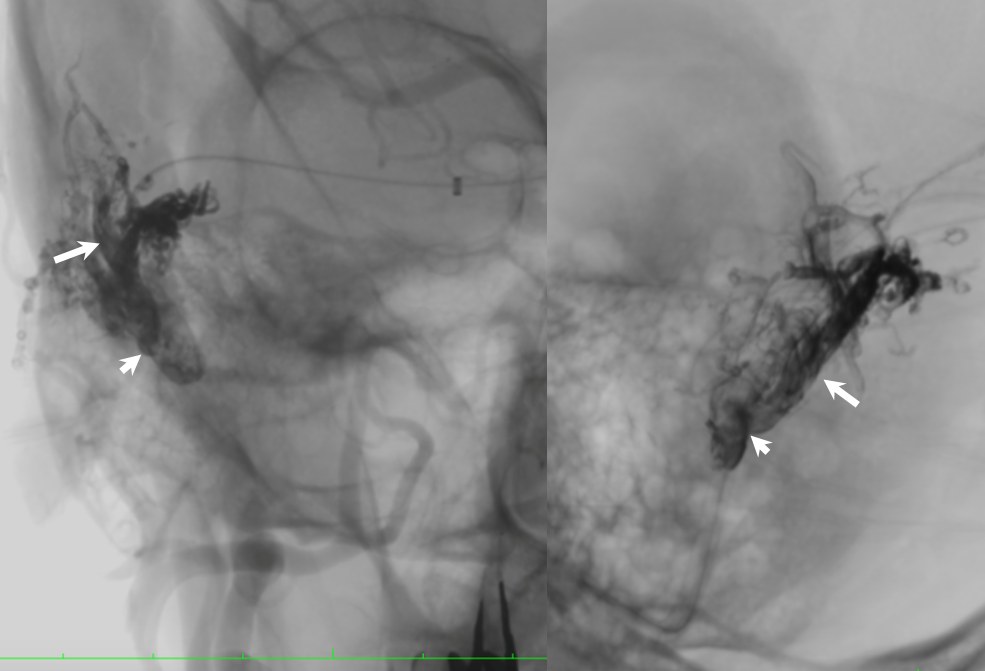
Post embo. The transverse sinus is preserved draining towards torcular
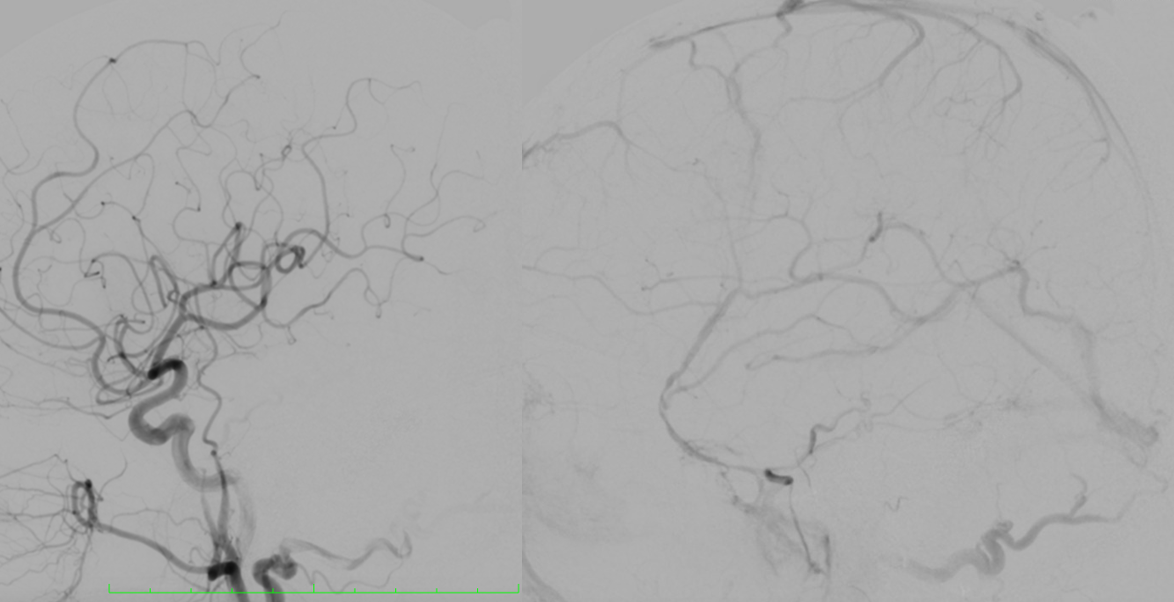
For more superselective cases, check out the Dural Fistula section here

